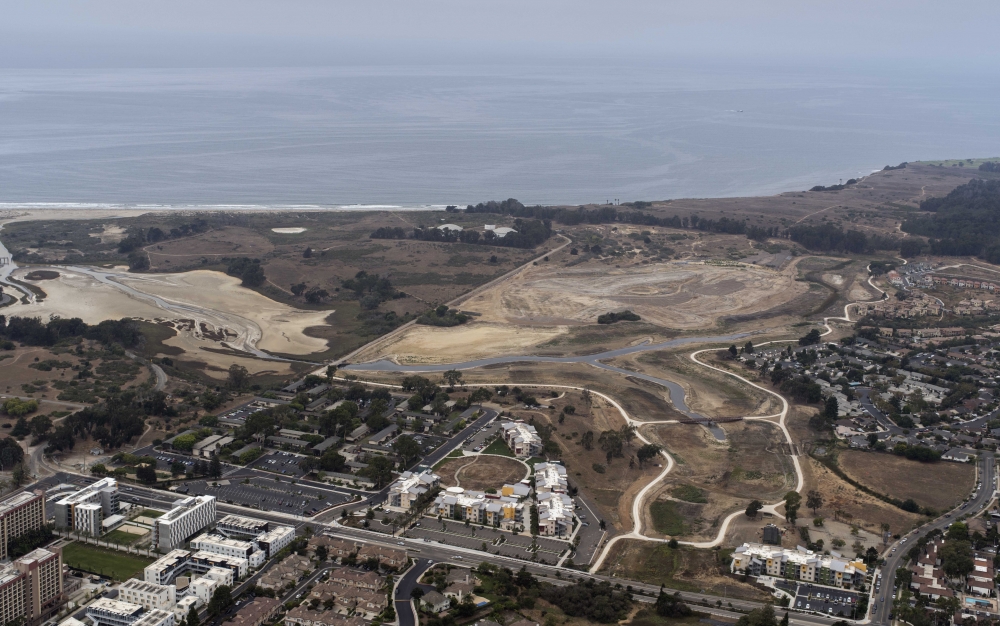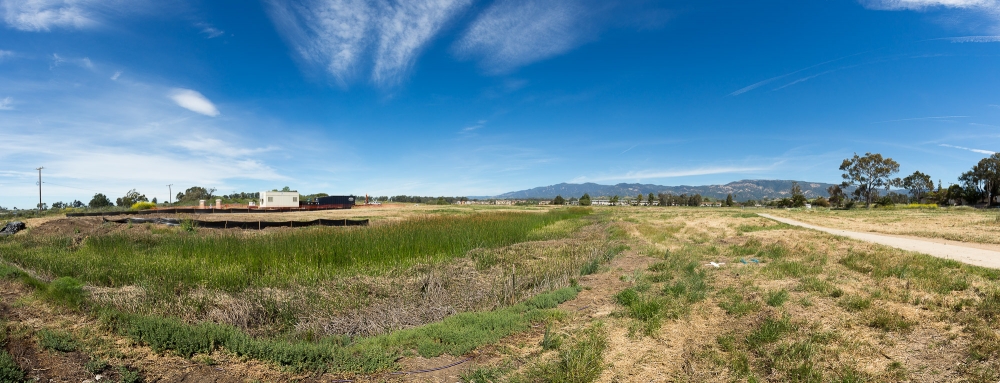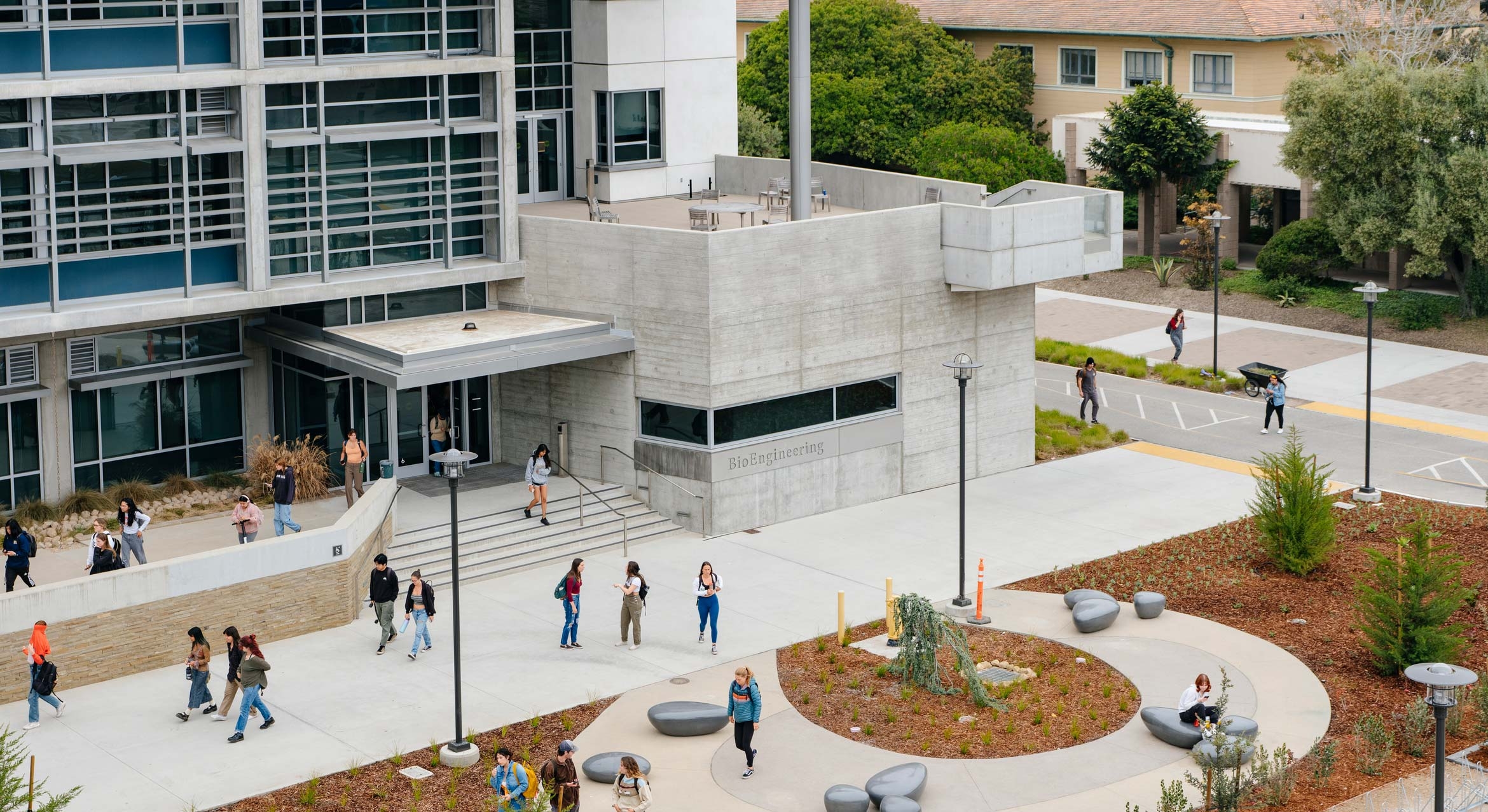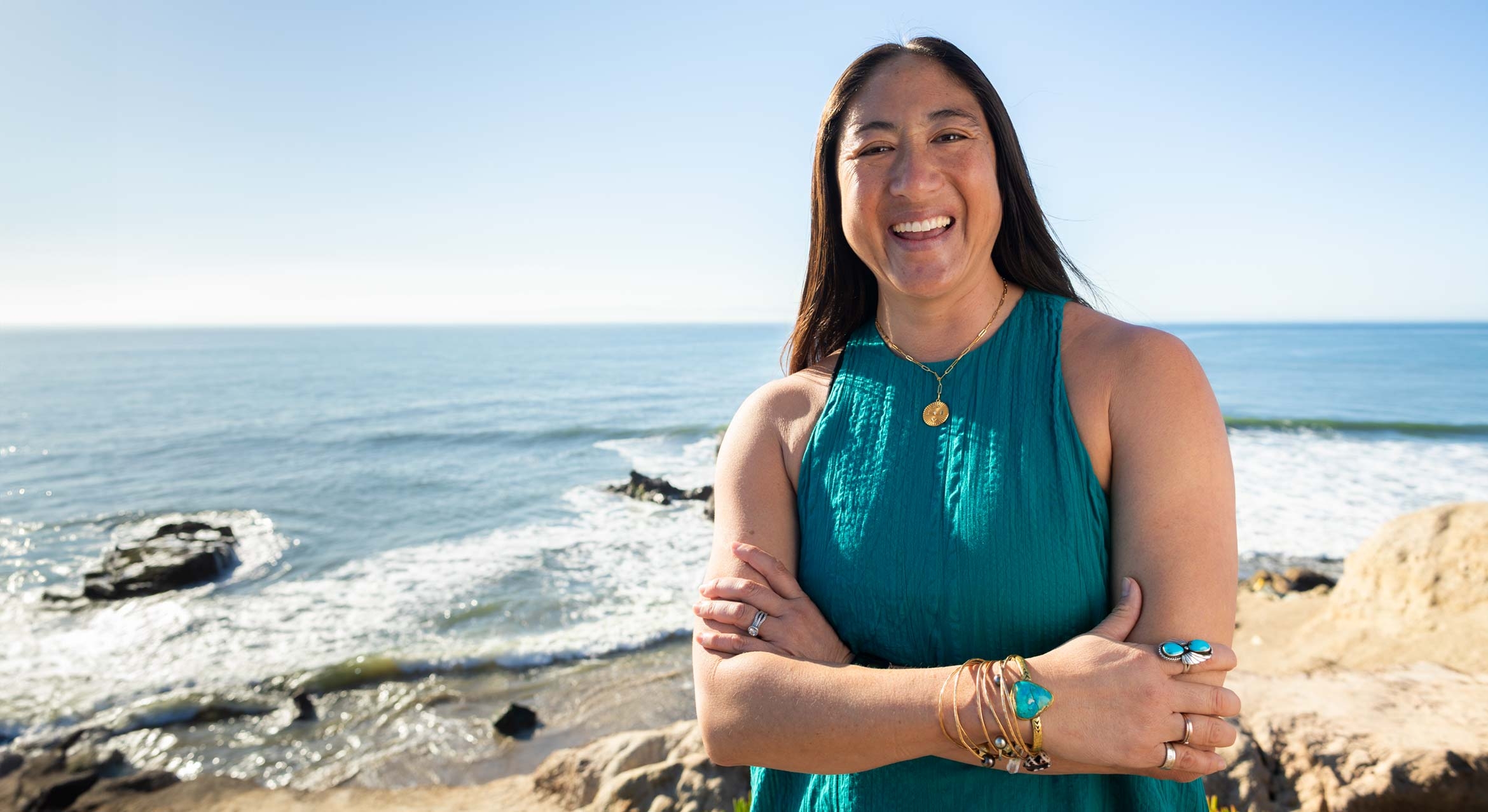‘Unprecedented Opportunity’
Safer passage between neighborhoods, schools and open spaces — and a decidedly scenic passage at that.
UC Santa Barbara this week opens 1.4 miles of public trails at North Campus Open Space (NCOS) as part of its ongoing restoration of the former Ocean Meadows golf course into an ecological wonderland for research, teaching and just plain enjoyment.
The fully ADA accessible Marsh Trail provides a connection from adjacent homes, bus stops and bike paths to NCOS and to the larger Ellwood Devereux open space through Devereux Creek, Phelps Creek, Whitter, Storke and Venoco Road access points. The trail will provide an alternative — and much safer — route to school for up to 200 Isla Vista School students living on the site’s north side.
The public is invited to celebrate this milestone — and to test out the trails — during two special events this week. NCOS will welcome participants in a Bike/Walk to School Day organized by the Coalition for Sustainable Transportation from 7:30 to 9 a.m. Wednesday, Oct. 10. Then, from 9 a.m. to 1 p.m. Saturday, Oct. 13, an open space “open house” will feature nature walks, planting and birding activities, raptor encounters and more to mark the public opening of the Marsh Trail. An additional mile of trail on the NCOS mesa will open once the restored grassland is further established.
“In all, this project represents a 10 percent increase in coastal wetland area in Santa Barbara County,” said Lisa Stratton, director of ecosystem management at UCSB’s Cheadle Center for Biodiversity & Ecological Restoration (CCBER), which is overseeing the NCOS effort that officially broke ground in April 2017. “It demonstrates that restoration on this scale, of seriously impacted wetlands, can happen in an urban setting and in a way that offers multiple benefits in our changing world — improving downstream water quality, reducing flood risk, adapting to climate change and providing opportunities for people to get exercise, connect to the larger California coastal trail network, enjoy safe routes to school and peacefully enjoy nature and wildlife.”
After winning more than $16 million in grant money — from some dozen public agencies — for the restoration effort, the NCOS team now is focused on raising philanthropic gifts to support site maintenance and monitoring, as well as research and educational programming for students from kindergarten through college.
They’re off to a successful start, recently receiving several donations from some prominent campus supporters.
Betty Elings Wells H’10, a UC Santa Barbara Foundation trustee, made a gift to support and name the entire trail system, while alumni Claudia ’75, also a trustee, and Alec ’76 Webster have done the same for a 200-foot bridge on the site. Suzanne and Professor Emeritus Duncan Mellichamp H’09, vice chair of the UC Santa Barbara Foundation Development Committee, are supporting a planned Visitor’s Plaza, as is Muriel Carlton; and the Santa Barbara Audubon Society has made a gift for an overlook at NCOS.
Other philanthropic donors to the project so far include trustees Jean Schuyler H’09 and Judy ’63 ’65 and Jack Stapelmann. In-kind donations include 73 pounds of locally sourced purple needle grass seed from Victor Schaff ’69 of S&S Seeds, who is himself growing a field of the grass collected by CCBER to provide the seed.
“This funding is all really important to realizing all the potential benefits of the project and building on the investment of public funds,” said Stratton, who has been honored by the U.S. Fish & Wildlife Service for her efforts on the endeavor. “We want to establish an endowment for NCOS that will fund not only long-term maintenance to protect the ecological and aesthetic integrity of the site, but also support high-quality monitoring and research opportunities for UCSB students, academic classes, K-12 outreach and student training in environmental education. We hope to raise the equivalent of a $10 million endowment and have so far secured about $3.5 million equivalent.
“The project already has provided opportunities for over 150 students to gain significant, meaningful, hands-on experience in restoration and ecological field research,” Stratton added. “It has enabled carbon sequestration in the salt marsh and in the perennial grassland and is adaptive to sea level in a way that will protect private property, public access and diverse habitats.”
Some 18 months after breaking ground — and more than 5 years since UC Santa Barbara was first gifted the site by The Trust for Public Land (which purchased it with grant money) — the North Campus Open Space project has achieved most of its primary goals, according to Stratton.
Among the highlights: Thirty-seven acres of diverse wetlands have been created and are gaining function through plants, invertebrates and fish colonization. The 100-year flood plain has been lowered by almost two feet, taking local residents out of the flood plain entirely. Wildlife species are using the habitat features — snags, logs and hibernaculum — while migratory and resident birds are using the wetlands and hunting on the site regularly. The project is functioning hydrologically as intended and is stable in terms of erosion risk. About 60 percent of the 80 acres to be vegetated have been planted — that’s 200,000 seedlings and 18 acres of drill-seeded perennial grasses in the ground so far — with another 250,000 coming over the next year.
“One of the things that CCBER focuses on and that makes this project unique, in addition to the student component, is the fact that we collected all the seed from the local watershed for the plants on site. In this way, we are really preserving local natural history and local genetic processes and genotypes.”
“As a university we are modeling our leadership in sustainability by stepping out of the box and doing this project for the community, and to address the concerns that all of us, as Californians, are facing with the increasing density on our coast. People don’t recognize the importance of wetlands until they are gone,” Stratton said. “This is an unprecedented opportunity to bring something back instead of writing off what has been destroyed. That UC Santa Barbara is a leader in that is huge — there is no other university I know of that has taken on a project like this”.
The restoration project overall has received grant money from agencies including the U.S. Fish and Wildlife Service, the State Coastal Conservancy, the Wildlife Conservation Board, California Natural Resources Agency and the Ocean Protection Council, as well as California Department of Fish and Wildlife, Department of Water Resources, the Urban Streams Program, California State Parks, CalTrans, the Coastal Fund and Goleta West Sanitary District.





